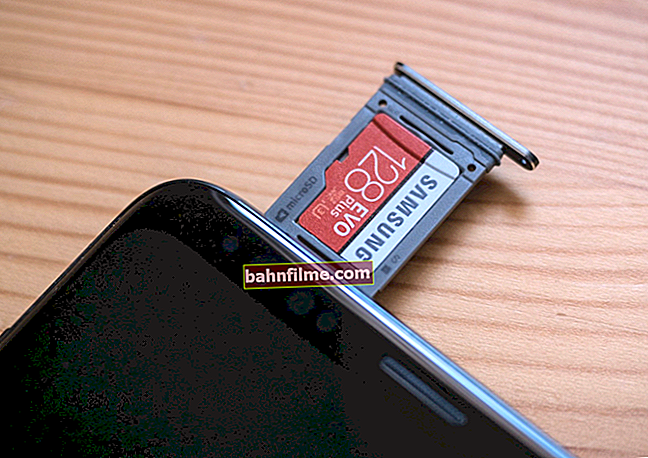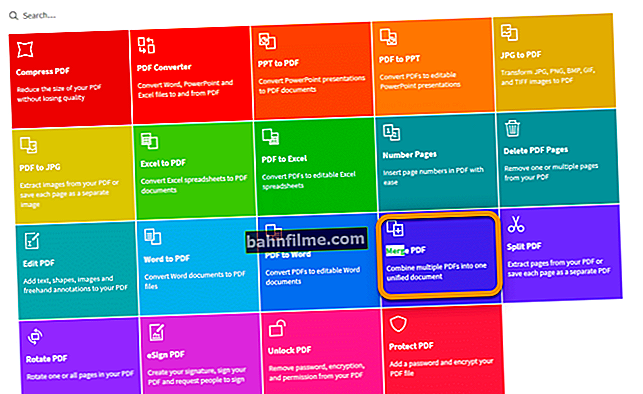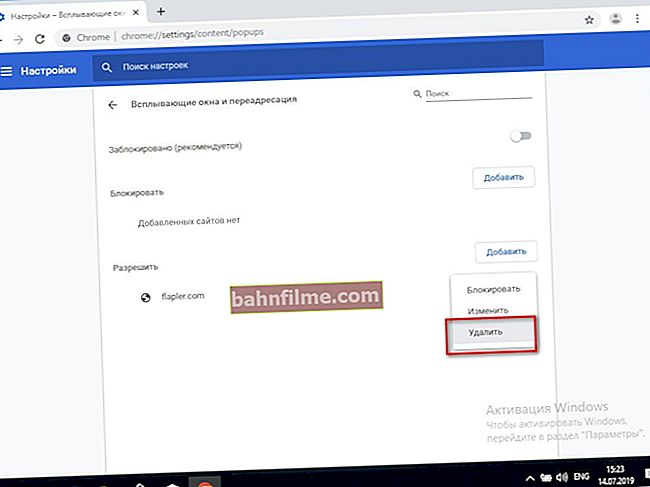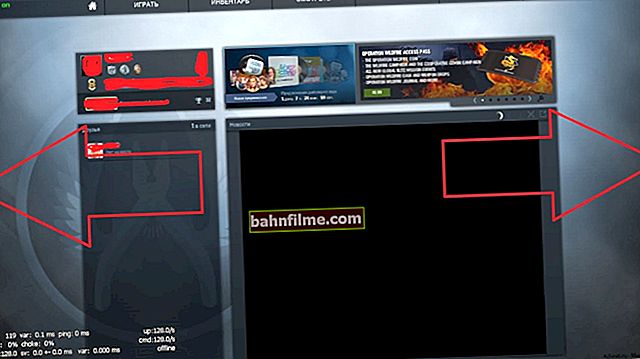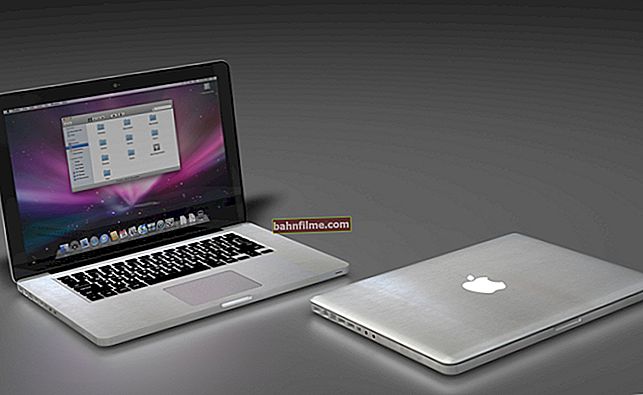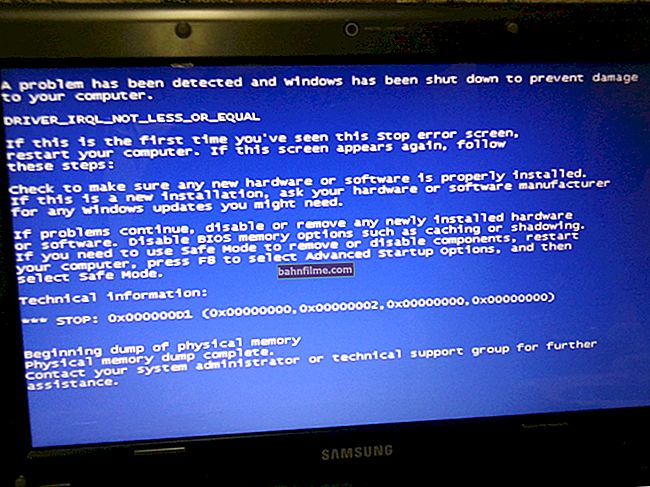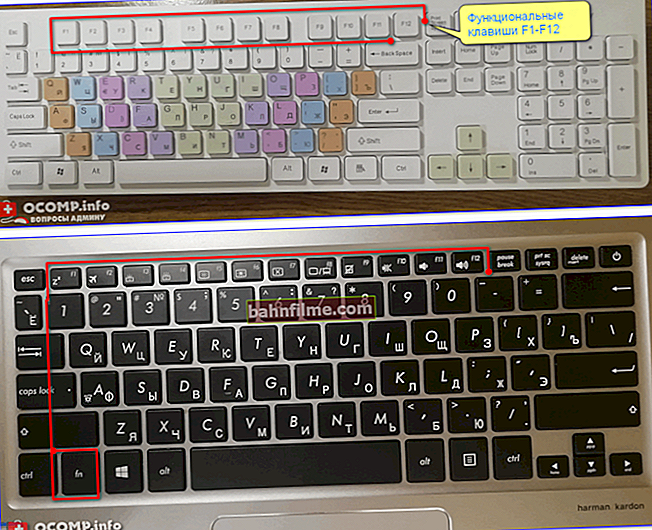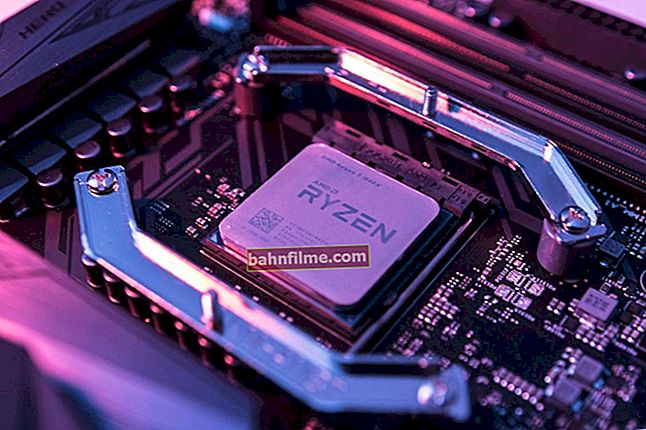 Hello!
Hello!
From experience, I can say that very often the cause of problems when working and connecting to Wi-Fi networks is not a router (router), but a wireless network adapter (with the help of which, in fact, your computer / laptop is connected to Wi-Fi networks).
All modern laptops have a built-in network adapter; on stationary PCs, such an adapter is usually purchased separately (often a small antenna is simply connected to one of the USB ports - this is the adapter ✔).
In general, there are usually no problems with this piece of hardware (wireless adapter) (the piece of hardware either works or not), but there are a lot of questions with drivers for it, and it is because of them that problems with connecting to Wi-Fi networks are often observed -Fi.
In this article, I will analyze the most basic driver setup tasks (uninstallation, installation, update) that you have to face when connecting laptops / PCs to Wi-Fi.
So...
*
Do you have a driver for a Wi-Fi adapter on your computer?
Perhaps this is the first questionthat you have to deal with when you have problems connecting to a Wi-Fi network.
In general, when installing a new OS Windows 10 (8), the drivers for the Wi-Fi adapter are most often installed in the OS automatically (though they do not always allow you to use all the device options - but that's another question).
When working with Windows 7, the driver for the wireless adapter is often not installed, and it must be installed additionally from the disk (from the website of the manufacturer of your adapter).
👉 To help!

By the way, I cannot but recommend in this article programs for automatic driver updates (not only for Wi-Fi adapters).
To find out exactlyis there a driver for your device - open device Manager... To do this, open Control Panel, then translate the view to "Large icons" , and select dispatcher on the list.
Note: in Windows 10, by the way, you can right-click on START and select "Device Manager" in the context menu that appears.

How to open Device Manager / for example Windows 10
Next, you need to open the tab "Network adapters" ... In this tab, take a closer look at the following lines:
- Wireless Network Adapter;
- wireless network adapter;
- *** Wireless (clarification: instead of asterisks there can be any word, manufacturer's brand, for example).
The example below shows that the driver for the Wi-Fi adapter is installed ( note: Dell Wireless).

Wireless Adapter / Dell Wireless
For comparison I will give a screenshot below what the device manager will look like if driver for wifi not.
Please note that in the tab "Other devices" you just have to write "Unknown device" (a line with a yellow exclamation mark). By the way, you may have several such lines - if several drivers for different devices are not installed at once.

No driver for Wi-Fi adapter
*
How to install / update a driver for a Wi-Fi adapter
Method number 1: in Windows without downloading additional. software
In general, it is ideal if you have a disk with all the drivers for your hardware (on laptops, drivers are often thrown onto the hard disk itself).
If there is no disk, then in some cases you can get by with "little blood": to update the driver and you have the Internet - just press only 1-2 buttons in device manager !
Option number 1 : when you open the device manager, there is a button in the top menu "Update hardware configuration" - click it!
The fact is that when Windows "sees" the hardware for which there is no driver, it will try to update it on its own (very often this method works ...).

Update hardware configuration
Option number 2 : in the device manager expand the tab "Other devices" , then right-click on the unknown device and select from the menu "Update drivers ..." .
Next choose "Automatic Driver Updates" and follow the instructions of the wizard (see the screen below 👇).

Driver update option
Method number 2: classic (if there is Internet)
To find a driver for any equipment, you need to know the model of this equipment (logical ...). To find out what kind of Wi-Fi adapter you have installed, you can do two things:
- find the documents that came with your device (we will not consider this path);
- use the specials. 👉 utilities for determining the characteristics of the PC.
By the way, if you have a laptop, you will need to know the model of your wireless adapter, even if you download the driver from the official website - the fact is that adapters from different manufacturers are often installed in the same laptop model.
And when you go to the official website, you will see 2-3 different drivers at once ...
One of the best programs for viewing computer characteristics is AIDA 64. In it, to find out the model of the Wi-Fi adapter, you need to open the tab "PCI / PnP Network" (see the line in which the Wireless Network Adapter will be, in the example below - this is the first line).

AIDA - find out the manufacturer of your wireless adapter
Further, knowing the model of the wireless adapter, just paste this line into the Google search engine - the first link found leads to the official website from which you can download the required driver.

Search for a driver on Google
In general, the problem is solved ... 👌
Method number 3: how to update the driver if there is no Internet
Perhaps this is the worst option - there is no Internet, because there is no driver. To download the driver you need the Internet. Vicious circle!
👉 To help! How to update drivers if the Internet does not work - see instructions ->

Not connected - no available connections / no driver for Wi-Fi
Of course, it will not work without the Internet at all, but there is a good solution to this problem (the option is suitable even if you do not know the model of your device).
There is such a wonderful program as 3DP Net (link to the official website).

You can even download it using the Internet on your phone (it weighs about 100 MB, which is less than many drivers from official sites).
The essence of the program is simple: it will be able to install the driver for almost any network adapter (wired, wireless), and will give you access to the Internet (moreover, it does not need an Internet connection to work, it is enough to download it once).
This is a very handy application that is recommended to keep on your emergency flash drive!
Actually, when you run it, it will automatically detect your adapter model and offer to update the driver - just click once with the mouse on your network card (see the screen below).
Next, a wizard will start, which in 3 steps will install the driver for you ...

Wi-Fi driver installation steps
👉 To help!
For those who could not update the driver - I recommend that you read the article on updating drivers for an unfamiliar device
*
Removing the old Wi-Fi driver
In some cases, you cannot install a new driver for a wireless adapter until you uninstall the old one.
Important! Before removing the old driver - make a backup copy of the system (or make a backup of the drivers). How to make a backup of the system and then restore it is described in this article.
Method number 1: through the device manager
To remove a driver in the device manager, just find the device you need and open its properties (double-click the left mouse button), then open the tab "Driver" , and press the button "Delete" (see arrows 1, 2, 3 on the screenshot below 👇).

Uninstall Driver / Device Manager
Method number 2: through Driver Sweeper
There is a special utility to remove any drivers from the system - Driver sweeper ... You can find out how to use it from the article, the link to which is given below.
👉 To help!
How to remove drivers using special utilities (Driver Sweeper, for example).
By the way, the utility allows you to remove almost any driver in the system - be careful not to delete anything you need ...

Selecting drivers to uninstall ...
*
On this I round off ...
Good luck and peace of mind to everyone (it is often not enough in case of problems with "firewood" 👌)!
👋
First publication: 01/17/2017
Correction: 01/05/2020

